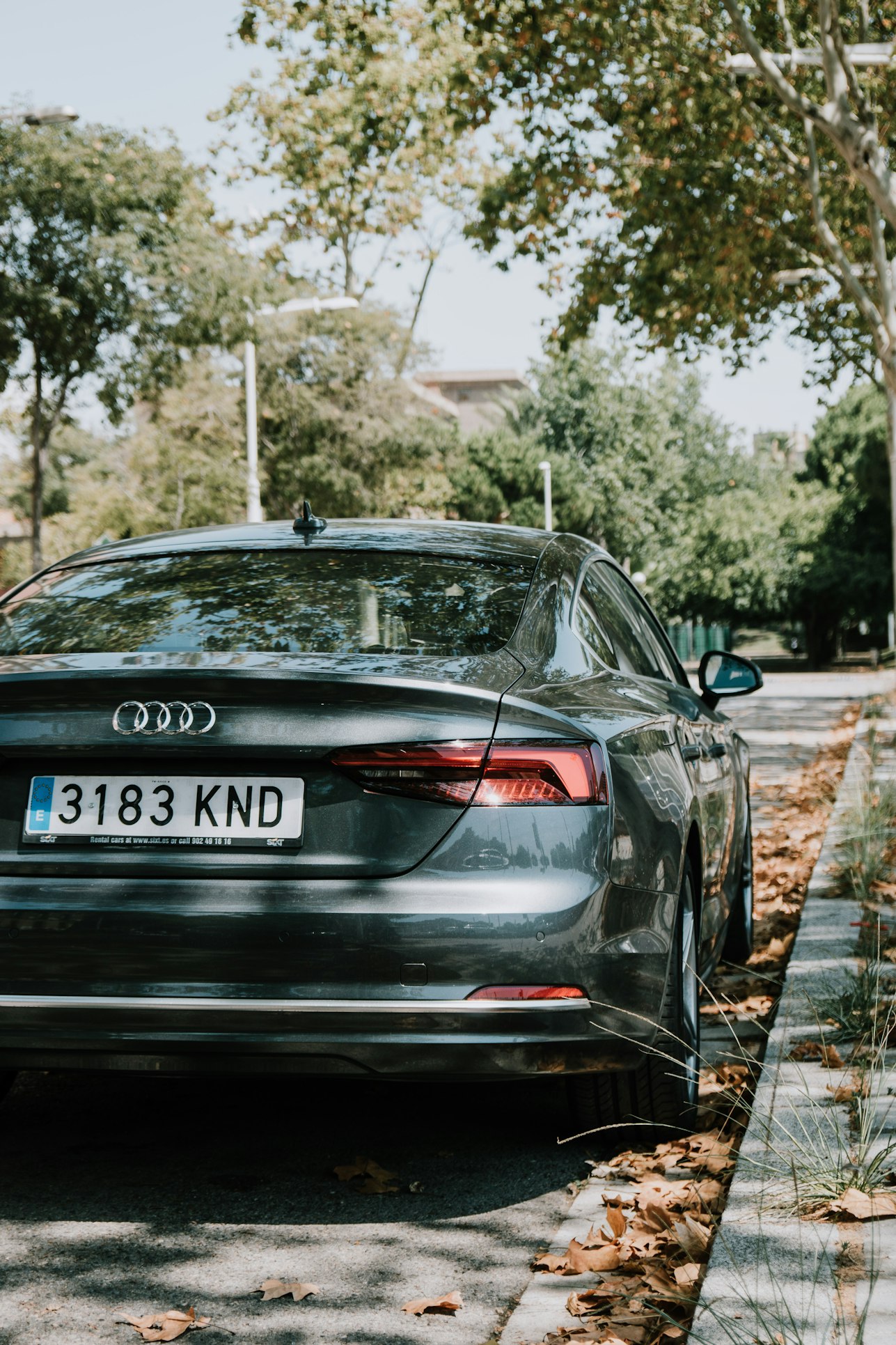Travel
Hot Roads, Long Drives: How to Keep Your Audi Performing All Summer

Audi drivers know their vehicles are built for more than just the daily commute. Summer opens the door to longer drives, warmer conditions, and more demanding roads. But higher temperatures mean more strain, especially on the systems that usually go unnoticed until something goes wrong. LLLParts specialists have seen it time and again: summer isn’t the problem. The lack of preparation is.
Cooling Isn’t Just for Comfort — It’s Critical
An Audi’s engine is finely tuned, but that precision only works when the cooling system is doing its job. Heat builds fast in slow-moving traffic or on steep inclines, especially when the air outside is already over 30°C. Radiators, thermostats, and coolant circulation all work together to stabilise engine temperature. If one part underperforms, the entire system pays the price.
That’s why LLLParts recommends checking for signs early — higher-than-normal temperature readings, slight drops in coolant level, or unusual fan activity after shutdown. These small cues are often the beginning of a larger issue. And if replacements are needed, using certified Audi parts ensures the system stays true to its original design.
Transmission Stress Comes Quietly
In hot weather, especially on long routes, the automatic transmission can start to show signs of heat fatigue. The gearbox works harder to shift smoothly, especially when the fluid starts to thin out under continuous load. On longer climbs or highway stretches, drivers might notice subtle changes — slightly slower gear shifts, faint lag in response, or a bit of hesitation under the throttle. According to LLLParts experts, these are the kinds of symptoms that appear before mechanical wear becomes a serious problem.
Routine transmission fluid changes — often skipped or delayed — make a noticeable difference in long-term durability. And for cars that spend a lot of time in mountain regions or stop-start city traffic, checking for thermal wear on solenoids, regulators, and cooling lines isn’t optional. It’s prevention. Simple, effective, and cheaper than replacement.

Tyres, Brakes, and Heat-Fade
Heat doesn’t just affect mechanical parts — it changes how rubber and brake material behave. Audi’s performance is only as good as what connects it to the road. That’s why tyre pressure checks in the morning (before the sun heats the surface) are more than routine — they’re essential. Overinflated tyres expand further in heat. Underinflated ones get soft, unstable, and unpredictable. LLLParts specialists advise choosing summer-rated tyres with proper load and heat resistance, especially for higher-performance models like the S4, Q5, or RS series.
Braking systems also fade faster when things heat up. Long descents or aggressive city driving in hot weather wear pads quicker, especially if they’re already near the end of their lifespan. Subtle signs like longer stopping distances, squealing, or even light vibration under braking are clear warnings. Better to act before the warning light comes on.
Interior Systems Can Strain Too
It’s not just what’s under the hood. Cabin electronics and sensors work harder in summer, especially when exposed to direct sunlight. Malfunctioning AC, delayed sensor response, or battery drainage can all result from prolonged heat exposure. LLLParts experts often recommend checking cabin air filters and running climate diagnostics if cooling seems sluggish. Most issues here aren’t about broken systems — they’re about systems that haven’t been cleaned, updated, or recalibrated in a while.
Travel
Hoptraveler.com: Redefining Travel with Personalized Experiences

In the age of digital transformation, travel has evolved from being a mere getaway to an immersive, highly personalized experience. Hoptraveler.com is at the forefront of this transformation, offering travelers a platform that tailors each journey to their unique preferences. Whether it’s the destination, accommodation, or the type of experiences sought, Hoptraveler.com has redefined how we plan and experience travel. This article will explore how Hoptraveler.com has revolutionized travel by offering personalized experiences, the technology behind it, and the benefits it provides to its users.
The Evolution of Personalized Travel
In the past, travel agencies were the primary go-to for organizing trips, but these agencies often provided one-size-fits-all solutions. This traditional model left little room for personalization. However, as technology advanced and online platforms became the norm, travelers began to seek more tailored experiences. Hoptraveler.com recognized this shift and capitalized on it, building a platform that allows individuals to customize their travel experiences based on their specific preferences, budget, and lifestyle.
With Hoptraveler.com, users are no longer limited to generic itineraries. Instead, they can craft journeys that reflect their personality, interests, and goals, whether that involves luxury stays, adventure tourism, or cultural immersion. The platform takes into account a wide range of factors, such as the traveler’s previous trips, feedback from other users, and even seasonal trends, to recommend the most suitable options.
How Hoptraveler.com Works
At the core of Hoptraveler.com lies a robust algorithm that uses machine learning and artificial intelligence to understand a traveler’s preferences and suggest the best options. This algorithm doesn’t just rely on basic filters like price and location; it takes into account a plethora of details, including:
- Past Travel History: By analyzing previous trips, Hoptraveler.com gains insights into the types of destinations and experiences a traveler enjoys. This allows the platform to recommend similar trips or places that align with the user’s interests.
- Traveler Feedback: After each trip, users are encouraged to rate their experience. This feedback is invaluable as it helps refine the platform’s recommendations. Positive reviews boost certain destinations, while less favorable experiences help to weed out options that might not be suitable for others.
- Personal Preferences: Whether it’s a preference for outdoor adventures, culinary experiences, or wellness retreats, Hoptraveler.com adjusts its suggestions based on what the user explicitly selects in their profile.
- Budget Optimization: Budget is a critical factor for many travelers. Hoptraveler.com uses a dynamic pricing model that considers factors like travel dates, booking time, and available discounts to offer the most competitive prices for tailored trips.
- Seasonal Recommendations: The platform also takes into account seasonal trends, suggesting destinations that are ideal for the current time of year, whether it’s skiing in the winter or beach vacations during summer.
The Benefits of Personalized Travel
The rise of personalized travel offers several advantages, both for the traveler and the travel industry. Here are some key benefits of using Hoptraveler.com:
1. Time-Saving and Convenience
Planning a trip can often be time-consuming and overwhelming. Sorting through endless lists of destinations, accommodations, and activities takes hours. Hoptraveler.com removes this stress by curating a list of options that meet the traveler’s preferences, significantly reducing the time spent on planning. With personalized recommendations, users can make informed decisions without the need for excessive research.
2. Tailored Experiences
One of the greatest advantages of Hoptraveler.com is its ability to provide unique, customized travel experiences. The platform doesn’t just offer standard vacation packages; it presents options that are crafted to fit the traveler’s desires, whether it’s a gourmet food tour in Italy, a beach resort stay in Bali, or an off-the-beaten-path hike in the Swiss Alps. These tailor-made itineraries ensure that travelers get the most out of their trips, enjoying experiences they truly care about.
3. Enhanced Satisfaction
Personalization often leads to greater satisfaction. When travelers find options that closely match their tastes and preferences, they are more likely to enjoy their trips and leave positive feedback. Hoptraveler.com takes into account user reviews and ratings, ensuring that future travelers can trust the platform’s suggestions based on past experiences.
4. Access to Exclusive Deals and Offers
Personalization extends beyond just travel choices. By leveraging partnerships with various hotels, airlines, and local tour operators, Hoptraveler.com can offer exclusive deals and discounts to its users. This allows travelers to access better prices for premium services, enhancing the overall value of their trip.
5. Stress-Free Travel
The personalized approach also extends to in-trip experiences. Travelers can access live support and guidance through the platform, ensuring that they have assistance when needed, whether it’s a last-minute change to their itinerary or recommendations for local activities. This support network gives travelers peace of mind, knowing that they are taken care of every step of the way.
Technology Behind Hoptraveler.com
The seamless integration of technology is what sets Hoptraveler.com apart from other travel platforms. The use of artificial intelligence and machine learning allows the platform to continuously improve its services by learning from each user’s preferences and past behavior. Moreover, the platform’s user-friendly interface ensures that even less tech-savvy travelers can easily navigate and make the most of the personalized services available.
The AI-driven recommendation engine is constantly updated with new travel trends, user data, and feedback, making it highly adaptive to changes in the travel landscape. As the platform grows, its ability to predict the ideal travel experience for each individual improves, ensuring that Hoptraveler.com remains a go-to resource for travelers seeking a customized experience.
The Future of Personalized Travel
As more travelers demand bespoke travel solutions, platforms like Hoptraveler.com will continue to lead the way in shaping the future of personalized travel. The next frontier for personalized travel will likely involve even more advanced technologies such as virtual reality (VR) and augmented reality (AR), which will allow travelers to “preview” destinations or experiences before they even book their trip.
Additionally, with sustainability becoming an increasingly important consideration, Hoptraveler.com is likely to integrate eco-friendly options into its recommendations, offering more sustainable travel choices that align with users’ values.
Conclusion
Hoptraveler.com is revolutionizing the travel industry by offering personalized experiences that cater to each traveler’s unique preferences. With its innovative use of technology, user-friendly interface, and commitment to providing tailored journeys, the platform is setting new standards in the world of travel. Whether you’re looking to explore new destinations or revisit old favorites, Hoptraveler.com ensures that your trip is designed just for you, making your travel experience truly unforgettable.
By offering not just destinations but curated experiences, Hoptraveler.com has become a trusted companion for travelers who desire more than just a standard holiday. It’s not just about where you go – it’s about how you feel when you get there.
Travel
The Best of Shipn Utsunomiya: Your Ultimate Guide to this Hidden Gem

Introduction
Nestled in Tochigi Prefecture, Shipn Utsunomiya is a hidden gem that offers an incredible blend of traditional charm and modern vibrancy. As a city that has managed to preserve its rich cultural heritage while embracing contemporary developments, Shipn Utsunomiya promises a unique experience for tourists. Whether you’re a history enthusiast, a food lover, or someone looking to immerse themselves in the local culture, this city has something special to offer.
In this guide, we will take you on a journey through Shipn Utsunomiya, highlighting its must-visit attractions, vibrant shopping districts, and local delights. With a rich tapestry of cultural history and modern amenities, Shipn Utsunomiya is a place where old-world charm meets the future. Join us as we explore everything that makes this Japanese city a must-visit destination.
Why Visit Shipn Utsunomiya?
A Blend of Tradition and Modernity
Shipn Utsunomiya is not your average tourist destination. Its historical sites, including ancient temples and shrines, are set against a backdrop of sleek urban developments. The city beautifully integrates its past with its present, offering visitors a chance to step back in time and explore its deep-rooted culture. Utsunomiya’s historical significance can be seen in landmarks such as the Utsunomiya Futarayama Shrine, which boasts stunning architectural beauty and provides a peaceful escape from the bustle of city life.
But Shipn Utsunomiya is also a modern city that thrives in today’s world. The city’s shopping centers, trendy cafes, and contemporary attractions cater to a variety of interests. Whether you’re strolling through the vibrant streets of Utsunomiya Station or enjoying the modern amenities of local parks and art galleries, this dynamic blend of the past and present offers an experience like no other.
Rich Cultural Heritage
Utsunomiya, the capital of Tochigi Prefecture, is home to a wide array of cultural experiences. One of the city’s most iconic elements is its historical role as a center of samurai culture. The region’s history as a samurai stronghold is evident in the many shrines, temples, and castles scattered throughout the area, each telling its own story of the city’s rich past.
Aside from its historical landmarks, Utsunomiya is also known for its impressive art scene. Local galleries and museums house both traditional and modern art, offering visitors a chance to experience the city’s diverse cultural expressions. Whether you’re an art lover or just curious about Japan’s artistic heritage, Shipn Utsunomiya delivers an unforgettable cultural experience.
What to Do in Shipn Utsunomiya
Explore Utsunomiya Futarayama Shrine
The Utsunomiya Futarayama Shrine is a must-visit for anyone wanting to experience Shipn Utsunomiya’s spiritual heritage. This Shinto shrine is located on the Futarayama Mountain, providing a serene environment that allows visitors to immerse themselves in the peaceful atmosphere. The shrine is particularly famous for its annual festivals, which attract large crowds. If you visit during one of these events, you’ll have the chance to witness traditional Japanese performances, processions, and local customs that have been celebrated for centuries.
Indulge in Utsunomiya’s Famous Gyoza
Known as the “Gyoza Capital of Japan,” Utsunomiya is home to some of the best dumplings in the country. Gyoza, or Japanese potstickers, are a popular dish that’s enjoyed throughout the city, with hundreds of restaurants serving their own unique versions. Whether you like your gyoza crispy or soft, filled with pork, vegetables, or even seafood, you’ll find a spot in Shipn Utsunomiya to suit your taste. Don’t forget to try the local specialty gyoza, which has become an iconic dish associated with the city’s identity.
Visit the Utsunomiya Museum of Art
If you’re an art enthusiast, the Utsunomiya Museum of Art should be at the top of your list. Located near the beautiful Futarayama Shrine, this museum features an impressive collection of both traditional Japanese art and contemporary works. The museum hosts rotating exhibitions throughout the year, showcasing both local and international artists. Visitors can enjoy the tranquil surroundings of the museum, with its picturesque gardens and peaceful ambiance, making it an ideal spot for reflection and inspiration.
Shipn Utsunomiya’s Shopping Scene
Utsunomiya Station: A Shopper’s Paradise
Utsunomiya Station is not only a transportation hub but also a great place to shop. The station complex houses a wide array of stores, from high-end fashion boutiques to local souvenir shops. Whether you’re looking for a stylish outfit, unique Japanese goods, or traditional handicrafts, you’ll find something to suit your tastes. After shopping, be sure to stop by one of the many cafes in the area to enjoy a cup of matcha or local tea while taking in the vibrant atmosphere.
Explore the Local Markets
For a more authentic experience, head to one of Shipn Utsunomiya’s local markets. Here, you can find everything from fresh produce to handmade goods. These markets are a great way to experience the local culture and interact with friendly shop owners. You can also purchase locally made gyoza-related souvenirs or other food products to take home as a memento of your visit.
Shipn Utsunomiya’s Natural Beauty
Take a Stroll Through Utsunomiya’s Parks
For those who enjoy the outdoors, Shipn Utsunomiya offers plenty of green spaces where you can relax and enjoy nature. The Utsunomiya Botanical Garden is one of the most popular parks in the city, featuring beautiful plant life and seasonal flowers. Visitors can take a leisurely walk along the paths, enjoy a picnic by the pond, or simply bask in the tranquility of the surroundings. The park is an excellent spot for families, couples, or solo travelers looking to unwind in a peaceful environment.
Explore the Local Mountains
For the more adventurous, the nearby mountains offer great opportunities for hiking and outdoor exploration. The Futarayama Mountain, home to the Utsunomiya Futarayama Shrine, provides a scenic hiking trail that leads to the shrine at the summit. The trail is surrounded by lush forest and offers beautiful views of the city and its surroundings. Whether you’re an experienced hiker or just looking for a relaxing walk in nature, Utsunomiya’s mountains provide a perfect escape.
How to Get to Shipn Utsunomiya
By Train
Shipn Utsunomiya is easily accessible by train, making it a convenient destination for visitors traveling from Tokyo or other nearby cities. The city is served by the JR Utsunomiya Station, which is a major transportation hub. From Tokyo, you can take the JR Tohoku Shinkansen or the Utsunomiya Line for a direct route to the city.
By Car
If you prefer to travel by car, Shipn Utsunomiya is also accessible by highways, and the drive from Tokyo takes approximately two hours. Renting a car gives you the flexibility to explore the surrounding areas at your own pace, including nearby natural attractions and scenic spots.
Conclusion
Shipn Utsunomiya is a wonderful blend of tradition, modernity, and natural beauty, offering something for everyone. From its historical landmarks and cultural attractions to its delicious food and vibrant shopping scene, this city is a must-visit destination for anyone exploring Japan. Whether you’re indulging in local gyoza, hiking the mountains, or simply taking in the sights, Shipn Utsunomiya will leave you with unforgettable memories. Don’t miss out on the opportunity to explore this charming city and discover all that it has to offer.
Travel
American Airlines Flight 457Q: A Case Study in Modern Aviation

Introduction: The Story Behind American Airlines Flight 457Q
In the world of aviation, some flights are remembered for their significance long after they have landed. American Airlines Flight 457Q is one such flight. While it may seem like just another flight number at first glance, the story behind this flight offers valuable insights into the state of modern air travel, the challenges airlines face, and the innovations that are reshaping the skies in 2025.
But what exactly makes this flight so remarkable? Why is it important to the future of aviation? Let’s delve deeper into the world of American Airlines Flight 457Q, uncovering the critical lessons it holds for both passengers and aviation professionals alike.
What is American Airlines Flight 457Q?
American Airlines Flight 457Q is a regular domestic route that typically runs between New York City’s John F. Kennedy International Airport and Miami International Airport. However, the significance of Flight 457Q lies not in its daily operation but in the specific circumstances and innovations that surrounded it in 2025.
Flight 457Q gained attention when it became the first flight in American Airlines’ fleet to implement a series of groundbreaking technological upgrades aimed at enhancing both passenger experience and operational efficiency. These upgrades weren’t merely incremental improvements — they represented a major leap forward in how airlines are adapting to the changing demands of modern air travel.
Why American Airlines Flight 457Q Matters in 2025
In 2025, the aviation industry is at a crossroads. With mounting pressure to reduce carbon emissions, improve fuel efficiency, and enhance the overall customer experience, airlines are constantly innovating. Flight 457Q became a symbol of these efforts.
A few years ago, airlines were still grappling with outdated technology and inefficiencies that made air travel less than seamless. But the advancements on this flight highlight how air travel is evolving. From sustainable aviation fuels (SAFs) to cutting-edge cabin designs and artificial intelligence (AI)-powered customer service, the flight exemplifies how the industry is stepping up its game.
Step-by-Step Look at the Key Innovations on Flight 457Q
1. Sustainable Aviation Fuel (SAF)
One of the most notable features of Flight 457Q was its use of sustainable aviation fuel (SAF). SAF has become a critical component in the push to reduce aviation’s carbon footprint. Unlike traditional jet fuel, SAF is produced from renewable resources like plant oils and waste fats, drastically cutting down on greenhouse gas emissions.
In the case of Flight 457Q, the airline used a blend of SAF that reduced CO2 emissions by up to 50%. This move is part of a larger strategy by American Airlines to integrate more sustainable fuels into its fleet in a bid to meet the airline industry’s ambitious net-zero goals by 2050.
2. AI-Powered Customer Service
Another key feature of Flight 457Q was the integration of AI-powered customer service systems. This technology, which uses advanced algorithms to provide personalized assistance, helped streamline the check-in process, reduce wait times, and anticipate passenger needs. Passengers aboard this flight experienced a smoother, more intuitive journey, as AI handled everything from baggage tracking to meal preferences.
3. Eco-Friendly Cabin Design
The cabin of Flight 457Q featured new eco-friendly materials and a design aimed at reducing waste. Recyclable materials were used throughout the aircraft, and innovative lighting systems were installed to reduce energy consumption. The cabin design also incorporated more comfortable seating, with ergonomically designed seats to improve passenger comfort during longer flights.
4. Data-Driven Flight Operations
Flight 457Q was also an example of how data-driven technologies are reshaping flight operations. With real-time data analysis, American Airlines was able to optimize the flight path, reduce fuel consumption, and avoid potential delays. By constantly adjusting operations based on real-time data, the airline can improve operational efficiency and reduce its environmental impact.
Common Mistakes and How to Avoid Them in Modern Aviation
While innovations like those seen on Flight 457Q are exciting, the road to adopting such advancements is not always smooth. Several challenges arise as airlines try to implement new technologies and strategies. Here are a few common mistakes airlines make and how they can be avoided:
1. Overlooking Sustainability for Short-Term Gains
One of the biggest challenges in the aviation industry is balancing sustainability with profitability. Airlines often focus on immediate cost savings, neglecting the long-term benefits of sustainable practices. In the case of SAF, while the fuel is more expensive than traditional jet fuel, its environmental benefits cannot be ignored. Airlines must make sustainability a priority rather than viewing it as an afterthought.
2. Underestimating the Importance of Customer Experience
In the rush to adopt new technologies, airlines sometimes forget that the passenger experience should always come first. AI and automation are important, but they cannot replace the personal touch that passengers expect. Ensuring a seamless blend of technology and human interaction is crucial for maintaining customer satisfaction.
3. Failing to Adapt to Regulatory Changes
The regulatory landscape around aviation is constantly evolving, especially when it comes to environmental standards. Airlines that fail to keep pace with these changes risk falling behind. For example, American Airlines has been proactive in meeting new carbon emissions standards, ensuring that Flight 457Q is not only innovative but also fully compliant with evolving regulations.
Benefits of Innovations on Flight 457Q
1. Reduced Environmental Impact
The most obvious benefit of Flight 457Q’s innovations is the reduction in environmental impact. The use of SAF, eco-friendly cabin designs, and data-driven operations all contribute to a significant reduction in carbon emissions, helping the airline meet its sustainability goals.
2. Improved Customer Experience
With AI-powered customer service, personalized experiences, and a more comfortable cabin design, passengers on Flight 457Q enjoyed a smoother, more enjoyable journey. This is a key factor in customer retention and satisfaction.
3. Operational Efficiency
By incorporating data-driven flight operations and more efficient fuel usage, American Airlines can lower costs and reduce delays, ultimately improving overall operational efficiency. This translates to fewer delays and a more reliable service for passengers.
Challenges and Drawbacks
1. High Initial Costs
Implementing these advanced technologies comes with significant upfront costs. Sustainable aviation fuel, eco-friendly materials, and AI-powered systems are expensive, and airlines must carefully balance these costs against the long-term benefits.
2. Technological Dependence
Relying on AI and automation means that airlines must ensure their systems are robust and free from technical failures. A single malfunction could disrupt operations, leading to delays and dissatisfied customers.
Future Trends in Aviation
Looking ahead, we can expect more flights like American Airlines Flight 457Q to become the norm. The industry will continue to embrace sustainable fuels, AI, and data-driven decision-making. Airlines will also focus on improving the overall passenger experience, with further advancements in comfort, personalization, and customer service.
FAQs
What is American Airlines Flight 457Q known for?
Flight 457Q is known for its groundbreaking use of sustainable aviation fuels, AI-powered customer service, and eco-friendly cabin designs, all contributing to a more efficient and environmentally friendly flight.
How does sustainable aviation fuel (SAF) work?
SAF is produced from renewable resources such as plant oils and waste fats, offering a significant reduction in carbon emissions compared to traditional jet fuels.
Will AI replace human workers in the aviation industry?
While AI is increasingly used for operational tasks, it is unlikely to replace human workers entirely. AI is meant to complement human roles, especially in customer service and operational efficiency.
Conclusion: The Future of Air Travel Is Here
American Airlines Flight 457Q may have started as just another domestic flight, but it’s now a symbol of how the aviation industry is adapting to the challenges and opportunities of the 2020s. With sustainable innovations, advanced technology, and a focus on customer experience, this flight represents the future of air travel. Airlines, like American Airlines, are not just responding to current trends but shaping the future of aviation in ways that will resonate for decades to come.
Call to Action: Curious about the future of aviation? Follow our blog for more insights into the cutting-edge innovations that are transforming air travel.





